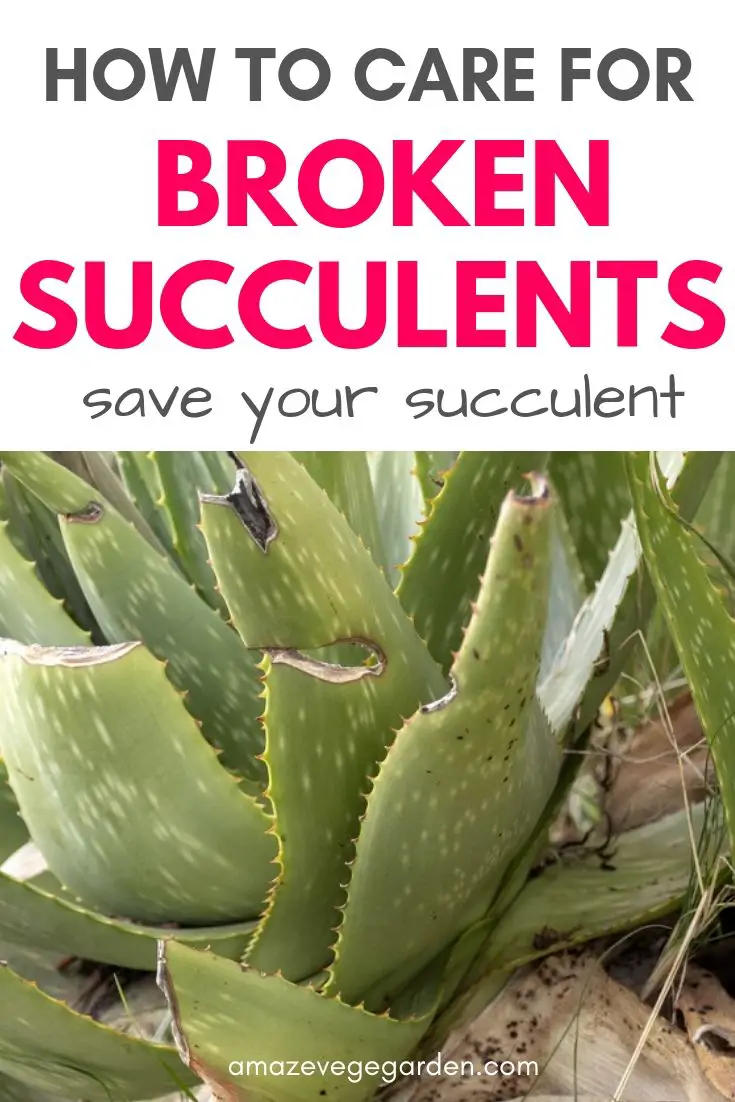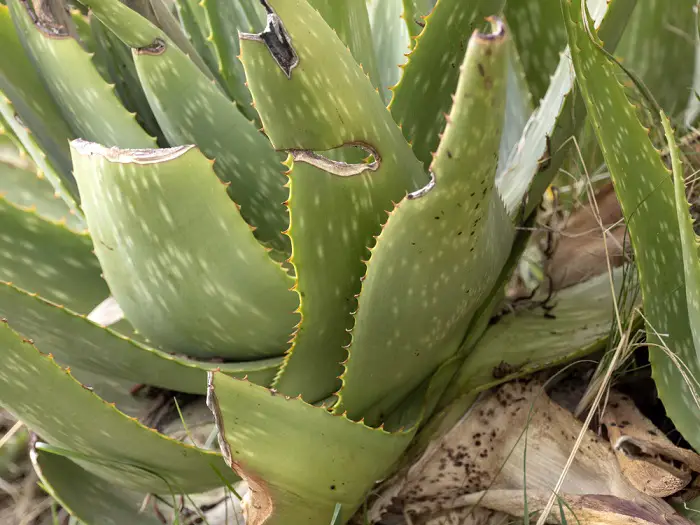When I started exploring these hardy little succulents, I came across the ways to take care of them. To my surprise, these are easier to propagate than other plants.
So How to care for Broken Succulents? If the leaves have fallen, dry them out for 2 days and then place them on cactus soil. Squirt a little water every alternate day for almost four weeks to grow new roots. If the stem has decapitated, you need to set it apart until it gets callused—a post which you need to nuzzle it in cactus soil. Do not water it for 3 weeks and keep it away from direct sunlight to get the new roots.
Well, it’s a bit challenging to propagate at times. These are not just how your succulent gets busted. I’ve figured out some ways to make it easier for you to care for your broken succulents in any situation.
How to propagate damaged succulents?
Propagating succulents is state of the art for a novice gardener. However, if you have been practicing it for a while and you want to advance the care, you need to know that, like other plants, the lowest leaves on the stem will eventually wither.
This is normal, and you need not worry about it. However, if the upper leaves are shriveled, this indicates that you are overwatering them or exposing them to excessive sunlight. Pests could also be a reason for them to shrink.
Propagate a fallen leaf:
If your succulent is a Stonecrop or a Copperleaf that got shred away, you can propagate it with leaves. You can fix the completely broken-off leaf in sandy dirt or cactus soil. It would help if you dried it completely or callous over the wet area.
Then you have to pot it in the dirt. Just make sure you don’t water it for a day or so. Then spurt water for four weeks, and you will observe it be rooting and growing. Then you need to bury the base (from where it was attached to the stem before) half an inch deep.
Treating decapitated stems and cuttings:
If you have Aeoniums or Sansevieria, you can’t propagate them with fallen leaves. You will need a cutting that’s clean and not mushy or a ripped one. These succulents are hardy enough to start growing by cutting and plating them in a small cup with moist soil.
Each succulent is of a different variety and thus has a unique way to propagate. Some of them propagate through stems. If your succulent has a broken stem, you need to get it callused enough to grow it again successfully.
Why do Succulent leaves get damaged?
Soil moisture:
There can be plenty of reasons why a plant could die. In the case of succulents, where the care is easier, if you find the leaves turning yellow or brown, you are either neglecting them or showering over care than what is needed; however, Succulentsh needs only a little water to do well. Still, they cannot survive with completely no water. Yellow leaves are a sign of dryness in the soil, which could also be an outcome of overwatering. Extremely wet soil is an equal threat to these little ones.
They cannot survive in waterlogged soil so make sure you check the soil moisture of the succulents today itself. Keep a drainage hole in the container to allow excess water to escape or use terra-cotta pots.
Plants shred leaves with time so that new ones can grow, but that’s not how frequently a succulent leaf desiccate. You should watch the soil moisture to ensure the water level is adequate, that it’s not too wet or too dry!
Etiolation:
Wondering what’s this? Well, it’s a state where your succulent was initially grown without enough light and then grew in search of more light. As a result of which, it has turned pale. This does not mean that the succulent is about to die but is likely to shed leaves.
Etiolation also destroys the aesthetic appeal of the succulent. So it’s not the one you can post to Instagram. You can’t fix this but still, begin propagation from cuttings and fallen leaves.
Bugs or Pests:
Gardening brings along pests and bugs, but the common insects do not infect succulents. Mealybugs, Scale, Aphids, Spider mites, Whiteflies, Fungus Gnats, and Ants are attracted to succulents with damp soil.
To get rid of these pests and bugs, spray rubbing alcohol or a solution of 15 ml of neem oil in 8 cups of water on the bugs. Pawn off these bugs with a mix of vegetable oil and soapy water. Overwatering creates a home for these
pests.
Fertilizers:
By now, you must have understood that succulents don’t need much care but just the right amount to flourish. You can light-feed the succulents with fertilizers in spring and summer. But make sure you do not over-fertilize them.
You might end up hampering the growth of the succulent. This also makes it more prone to bugs and pests. So watch the level of care you give!
Sunburn:
Not all plants can take direct sunlight for the entire day. Succulents like cacti can grow in sunlight. However, others can get damaged with an excessive amount of it. Eventually, leaves turn brown or black and shrivel with time.
You can fix it by moving your succulent to a place with less sunlight. This does not turn the damaged leaves healthy but saves the rest of your plant.
What if I have a Succulent leaf that’s just half?
You can easily propagate succulents like the Jade plant or money plant with a torn leaf or a stem put into the soil. Once the wound is calloused, the leaf grows roots and eventually turns into a full Crassula plant. But what if I only have half of a leaf left. Let’s say the other half got rotten or dried out. Do I still stand a chance to propagate my succulent if the part of the leaf that was attached to the stem is damaged?
This question might bother you, as by now you know how to propagate a complete leaf has fallen, a cutting, or a decapitated stem; but what to do in this situation.
Well, the answer is YES! One of the features of succulents is their ability to grow roots and new leaves even if the part attached to the stem is missing. It would help if you were very patient as the growth is prolonged. I have tried it myself.
I left the above-mentioned half-leaf on the top of cactus soil maintained to be perfectly humid and not wet. I managed to water the soil every three to four days. And I was about to lose hope when almost after 6 weeks, I found that the leaf grew its first root. This instilled the thought of propagation through the half leaf in my mind.
I continued the process until it grew more roots. It started budding new leaves in another 2 months. I am still in the middle of propagating it completely. By this, you have an idea about the level of patience you need to keep to see them blooming.
How to save broken-off Succulent?
Well, generally, you propagate when you want to grow your succulents in multiples, or you have a damaged leaf stem fallen. But do you know that re-potting could also save a succulent?
To give a longer life to your half-broken succulent, you must check the potting mix of the soil. The pot must have a well-draining system to suit the succulent. Apt humidity in the soil can save the rest of your succulents.
While repotting, you can actually examine the health of the plant. You get to check the roots of the succulent. You can always prune the dead or rotting roots. However, unlike other plants, succulent leaves don’t need a trim.
Repotting lets, you take a closer look at your succulent. Often, a few pests or bugs are left unnoticed, which ultimately damages the entire plant. Timely action can save the rest of your succulence. You should isolate the succulent so that the infection doesn’t spread.
The size of the planter is also an important factor when it comes to saving your succulents. The pot must definitely be bigger than the nursery pot but not too big like other plants. The right side of the planter gives room for its roots to grow appropriately.
However, if more than the needed size of a planter is chosen, then you end up leaving your succulent in moist soil for long. You can thus choose a suitable planter.
Some additional tips:
Do not mistake putting sand in the container, as it will work as per its tendency to retain water. Succulents need rocky soil that is moist enough to give nutrients for growth. A mixture of coarse sand and pumice is a perfect blend for its growth.
Succulents can also grow from seeds.
They need to be planted indoors in optimum light and moist soil.
Hopefully, this article helped you understand the reasons for the damage, the solution to save your succulent and propagate it. You can connect it with your succulent and take real care of it.
Read also: How To Care For Succulents In a Glass Bowl.
Did you find this post useful? Would you like to get back to it later? Save THIS PIN below to your succulents, cacti, or house plant board on Pinterest! Thanks 🙂


